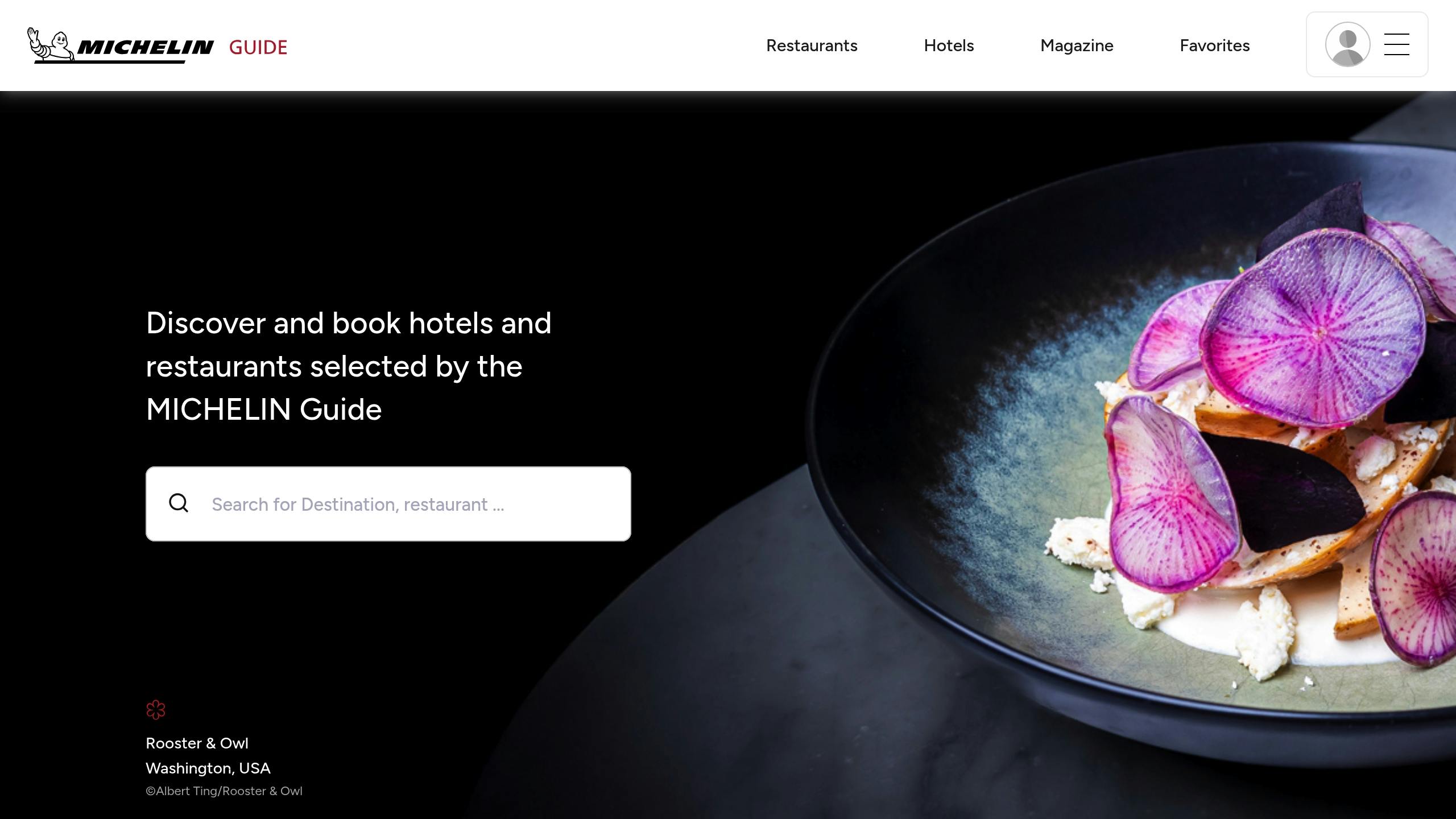Looking for the best steakhouse in NYC? Here's a quick breakdown of how MICHELIN and Zagat rate them:
- MICHELIN: Anonymous inspectors award 1-3 stars based on food quality, cooking techniques, consistency, and presentation. Ideal for luxury dining and technical precision.
- Zagat: Scores steakhouses on a 30-point scale using diner feedback on food, service, ambiance, and value. Perfect for capturing everyday dining experiences.
Quick Comparison
| Feature | MICHELIN | Zagat |
|---|---|---|
| Rating Scale | 1-3 Stars | 30-Point System |
| Evaluation Method | Expert Inspectors | Crowd-Sourced Reviews |
| Focus | Technical Precision | Overall Experience |
| Best For | Special Occasions | Casual & Business Dining |
Both systems highlight top NYC steakhouses like Peter Luger, Keens, and Quality Meats, but their criteria differ. Read on to find out which guide suits your dining preferences!
How MICHELIN and Zagat Rate Restaurants

MICHELIN's Inspector System
MICHELIN relies on a team of anonymous, highly trained inspectors to evaluate steakhouses through multiple unannounced visits. This approach ensures impartial and thorough reviews. For steakhouses, inspectors focus on key factors such as:
- Grading and aging of the meat
- Temperature control and consistency
- Preparation techniques and plating presentation
This expert-driven method prioritizes technical precision and consistency.
Zagat's Public Review System
Zagat takes a completely different route by gathering feedback directly from diners. This crowd-sourced system reflects a wide range of dining experiences, offering insights beyond technical details. By relying on the opinions of everyday patrons, Zagat provides a broader perspective on what a typical customer might expect.
Main Method Differences
The two systems offer distinct approaches to evaluating steakhouse quality. MICHELIN's method emphasizes expert analysis and technical rigor, while Zagat's public-driven reviews capture the collective voice of diners. Together, they provide complementary insights into what makes a steakhouse stand out.
Rating Scales Explained
Let's break down how each system evaluates and rates steakhouses.
MICHELIN Stars: 1-3 Scale
The MICHELIN Guide uses a 1–3 star system to rate restaurants:
- 1 Star: "A very good restaurant in its category."
- 2 Stars: "Excellent cooking, worth a detour."
- 3 Stars: "Exceptional cuisine, worth a special journey."
Zagat Scores: 30-Point System
Zagat takes a different approach, scoring steakhouses on a 30-point scale. These scores are based on diner feedback across three key areas: food, ambiance, and service.
Comparing Rating Criteria
While MICHELIN focuses on technical skill and precision, Zagat prioritizes the overall dining experience as reported by customers. Because of these differences, a steakhouse's rating can vary significantly between the two systems.
Best-Rated NYC Steakhouses
Looking for the top steakhouses in NYC? Here's a breakdown of some of the city's finest, as recognized by leading rating systems.
MICHELIN-Recognized Steakhouses
Peter Luger Steakhouse in Brooklyn has earned MICHELIN recognition for its high-quality cuts and classic preparation methods. Over in Manhattan, Strip House offers a more refined dining experience, delivering expertly prepared steaks at prices that won't break the bank.
Top Zagat-Rated Steakhouses
Keens Steakhouse wins over diners with its outstanding dishes and warm, welcoming atmosphere. Wolfgang's Steakhouse on Park Avenue also shines, thanks to its attentive service and consistently excellent steak offerings.
Steakhouses Praised by Both
Some spots manage to impress across the board. Quality Meats is celebrated for its creative approach to preparing meat, while Smith & Wollensky is known for its attention to detail and exceptional dining experience.
For more reviews and up-to-date listings, check out the NY Steakhouse Guide at https://steakhousesny.com.
sbb-itb-e6be165
How Ratings Affect Business
Price and Booking Adjustments
Top-tier ratings often lead steakhouses to increase prices on signature dishes and extend wait times for prime reservation slots. It’s a common response to heightened demand.
What Customers Look For in Ratings
Different rating systems attract different diners. MICHELIN tends to draw those celebrating special occasions and seeking luxury dining experiences. On the other hand, Zagat appeals to regular diners and professionals looking for reliable quality.
Maintaining High Standards
Earning high ratings pushes steakhouses to step up their game. This often means stricter quality checks and enhanced staff training to meet elevated expectations. For the latest ratings, check out the NY Steakhouse Guide at https://steakhousesny.com.
Main Differences Summary
MICHELIN relies on anonymous inspectors to award stars, focusing on the technical precision of the kitchen and ingredient quality. On the other hand, Zagat compiles feedback from diners, creating a 30-point score that reflects the overall dining experience, including food, service, decor, and value. MICHELIN highlights the chef's craft, while Zagat offers a snapshot of what diners experience. These distinctions can help you decide which guide aligns with what matters most to you.
Finding Your Next Steakhouse
When choosing a steakhouse, consider the occasion and your preferences. MICHELIN stars indicate top-tier culinary expertise, perfect for special celebrations. Zagat scores, based on diner reviews, can help you find a spot that matches your needs for anything from business dinners to casual nights out. Understanding these systems allows you to pick a dining experience that prioritizes either exceptional cuisine or a more balanced atmosphere.
For more detailed information and recommendations, check out the NY Steakhouse Guide at https://steakhousesny.com to find the perfect venue for your next meal.


